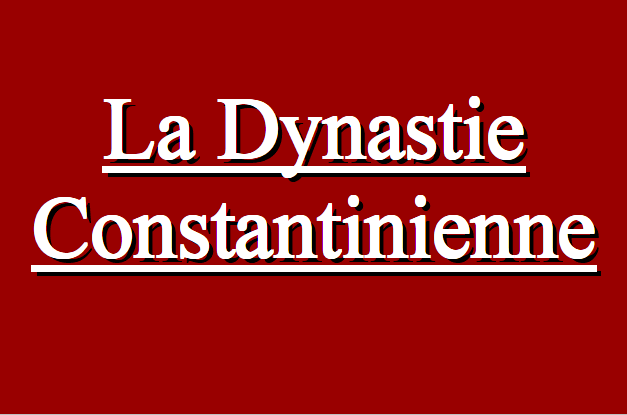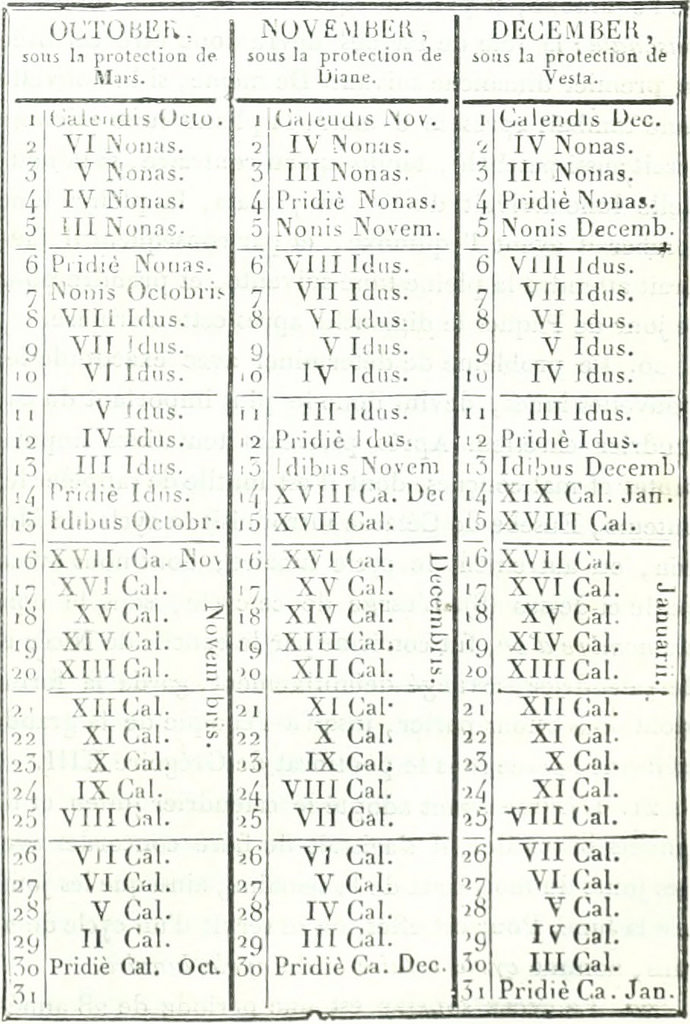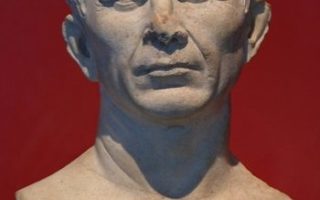Hi to all of you ! How are you ? Two weeks ago, I told you that I will be talking about the Constantinian Dynasty in the next article. Now it was going to be too long if I did that. That’s why I just told you the story of the Tetrarchy. We will then see this week “the Constantinian Dynasty”. We will therefore see here, of whom it was composed, at what time did it exist…. Now let’s get to the heart of the matter and, above all, enjoy your reading.
Context of the emergence of the Constantinian dynasty
In the 4th century, the Empire was in trouble. This is why Constantine I, after getting rid of Licinius, reestablishes order and creates a new dynasty in his name: the Constantinian dynasty.
This dynasty was created in 306 AD by Constantine I and disappeared in 364 AD, after the end of Jovian’s reign.
Who did the Constantinian dynasty consist of?
This dynasty consisted of Constantine I (December 307 AD – May 22, 337 AD), Constantine II (September 337 AD – April 340 AD), Constantine I (September 337 AD – February 350 AD), of Constance II (September 337 AD – October 361 AD), of Julian II (November 361 AD – June 363 AD) and of Jovian (June 363 AD – February 364 AD).
Now that we know the makeup and background surrounding the Constantinian dynasty, let’s see what happened during that time.
The History of the Constantinian Dynasty
This dynasty began when Constantine I created it during his reign. He devoted much of it to restoring order and establishing himself as the sole ruler of the Empire. Indeed, he could only achieve his ends when he succeeded in killing Licinius in AD 324. Subsequently, he made great changes. He created a new dynasty, changed the capital from Rome to Constantinople, changed the administration … Also, he made reforms, especially economic ones. It is also to him that we owe the solidus which was an exceptionally stable currency. Moreover, the term “balance” which is used for shopping but especially for salaries derives directly from the term “solidus”. As is the word “sou”. Finally, he promoted the growth of Christianity which mainly thanks to him, took more and more place in the life of the Romans.
Constantine I was therefore an emperor who did great things for the Empire and who drastically changed it, improving and stabilizing it.
Following the death of Constantine I, three co-emperors came to power. These are Constantine II, Constant I and Constance I. All three agree on eliminating all pretenders to the throne and then sharing power. The massacre done, the three co-emperors split the Empire into three parts. Constantine II governs the west (Gaul, Brittany and Hispania), Constant I governs, under the tutelage of his brother Constantine II, the center (Italy and Africa) and Constance II governs the east ( Thrace, Macedonia…).
Soon, tensions began to appear between the three brothers. Subsequently, Constantine II, died in 340 AD, assassinated in an ambush. Then, Constant I will take the power of the lands left vacant. Then, tensions grow between the two remaining brothers. However, they both lead their lives, each on their own. For example, Constant I led various campaigns. But, in AD 350, the usurper Magnence murdered Constant I and Constance II then became the only emperor. He thus reigned until the end of his life when he named his only heir: his cousin Julien, as his successor.
This period between these three emperors was therefore complicated because of the misunderstanding of the three and their desire to dominate the other.
Julian II therefore became emperor following the death of Constance II. He devoted much of the time of his reign to managing religious problems, sometimes allowing all religions, sometimes disadvantaging some … As a rule, he opposed Christianity, especially through writings in his books and favored paganism . Subsequently, he began great campaigns against the Sassanids. But, he will get killed in battle.
Julian II was therefore an emperor who sought the right balance between religions and who did not have the opportunity to show his full potential in combat.
Jovian was therefore the last emperor to reign under the Constantinian Dynasty. During his short reign (363-364 AD), he reestablished, not without concessions, peace between the Romans and the Persians and allowed a rebalancing of religions thus allowing greater tolerance of the different practitioners. He died accidentally after only 8 months of reign, presumably asphyxiated during his sleep.
Jovian reigned little but he did good things during this short period.
Summary
The Constantinian dynasty was therefore a means of achieving a rebalancing of the Empire. It worked at first, but very quickly it became ineffective. Also, apart from the emperors, various usurpers (whom I have not discussed in this article) such as Magnence caused trouble throughout the Empire during this period. Therefore, the Constantinian dynasty saw good things happen like the solidus which was very important, but also saw bad things, like the difficulties at the religious level.
This article is now complete. Hope you enjoyed it, if so please let me know in the comments space and also tell me what topic you would like me to talk about in a future post. In fact, for the next article, we will continue to talk about Roman history with “The dynasty of the Valentinians”. See you next week !
Receive my free book Around the Roman Coin by clicking here




